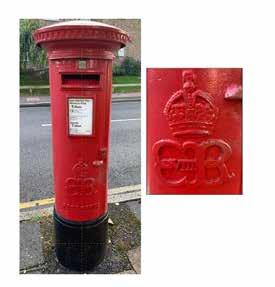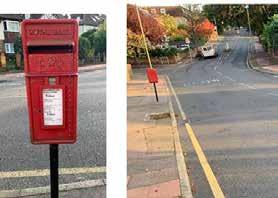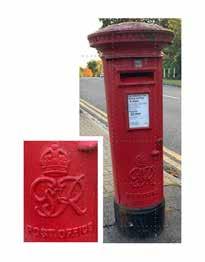- Home
- Local History
- The Tale of three pillar boxes
The Tale of three pillar boxes
Written by Pam Preedy.
Sometimes big changes to our lives come from solving simple problems. Letters were at the heart of a revolution in communications. In 1840, Sir Rowland Hill proposed an adhesive stamp indicating the pre-payment of postage – the Penny Black. He thought this would double the number of letters sent – which it did. At first correspondents had to take their stamped letters to the Post Office or collection point. The next change was to introduce post boxes or pillar boxes.
The first pillar box is believed to have been installed in the wall of the Wakefield Post Office in 1809. The pillar box was introduced in 1854 in the Channel Islands on the recommendation of Anthony Trollope and was originally painted sage green. By 1874 they had arrived in mainland Britain in the familiar red. They are now an established part of the street furniture that we hardly notice – especially nowadays when the art of letter writing is dying in favour of emails.


Take a closer look at the insignia on the front of the boxes and you can identify the monarch who was on the throne when a box was made. Near where I live in Bromley, there is a fairly rare example with E R on the front. Perhaps you would think it referred to Elizabeth Regina, but in fact her inscription would be E II R. It does, in fact, refer to Edward VIII. He only ruled for ten months before abdicating in favour of his brother George VI; consequently, very few of his post boxes were made.
One of his pillar boxes stands in Cumberland Road near the junction with Westmoreland Road. I see it most days and assumed that it had always stood there, but no, I am told that it used to stand further along Cumberland Road at its junction with St Mary’s Avenue. At this point, Cumberland Road and St Mary’s Avenue continues straight ahead.
It can be a tricky and potentially dangerous spot especially when children are coming and going to Highfield Primary School.
Consequently, it was moved to its safer position. The Post Office has not left the residents of that area postbox-less; they have a square box on a post. This is not the only one with a history.
A friend noticed that a post box close to St Mary’s Church in St Mary’s Avenue, sported the letters G R. She had seen maps dating back to Victoria’s reign with a post box sited there. So why were the initials not V R? Then she remembered that one night in July 1944 a V1 flying bomb reduced the church to rubble – the church’s spire fell in one flat piece, flat on the floor, and children joked that they could walk up the tower without the aid of a steeplejack’s harness. The pillar box, so close to this devastating explosion, would surely have been damaged if not destroyed. Hence, it would have had to be replaced with one with the new insignia.

Originally published in Life in Bromley magazine (Issue 5, July 2022)
